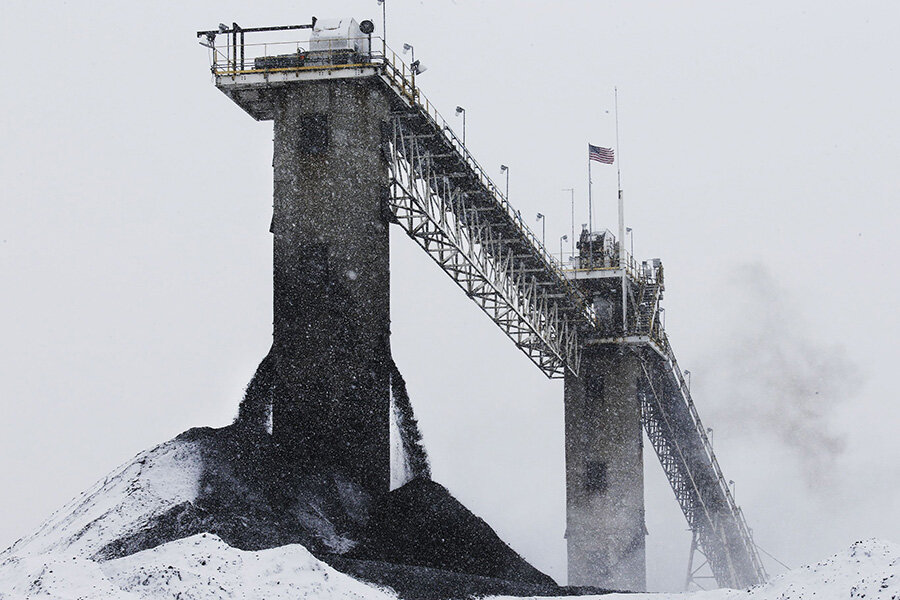US coal is in trouble
Loading...
The coal industry is in uncharted territory.
After decades of strong financial numbers and dominance in the electric power sector, coal producers are starting to fall apart faster than anyone could have anticipated. SNL Financial has produced some jaw dropping data on the quickly deteriorating coal industry, with a horrific performance in the second quarter.
The U.S. coal mining sector has exhibited an unprecedented wave of turmoil in just the last few weeks.
Walter Energy, an Alabama coal miner, announced on July 15 that it is filing for bankruptcy. Senior lenders will see their debt turned into equity, and if the company cannot turn the ship around, it will more or less sell off all of its assets. “In the face of ongoing depressed conditions in the market for met coal, we must do what is necessary to adapt to the new reality in our industry,” Walter Energy’s CEO Walt Scheller said in a press release. (Related: This Is Why Californians Pay More For Their Gasoline?)
Alpha Natural Resources, a top producer of metallurgical coal (used for steelmaking), was delisted from the New York Stock Exchange because its share price was “abnormally low.” The company is eyeing the possibility of declaring bankruptcy protection.
Arch Coal has seen its share price crater to similar depths that Alpha Natural Resources saw before it was delisted. Arch Coal pulled off a one-for-ten reverse stock split in an effort to avoid the same delisting fate as its peer. Essentially, the move to reduce the number of shares is intended to boost the share price, and it will take effect on July 27. But moves on paper won’t change the underlying fundamentals.
Coal prices are down 70 percent from four years ago. The U.S. is shifting towards natural gas in the electric power sector, and weak demand for coal is leading to mine closures. The Obama administration is also trying to reduce the country’s greenhouse gas emissions, and a litany of regulations intended to meet that objective are cutting down coal at the knees. As the dirtiest source of electricity, coal is in the crosshairs. The EPA is working hard to ensure that its Clean Power Plan, which puts limits on carbon emissions at the nation’s power plants, is finished before the end of Obama’s term. (Related: The Emerging Megatrend Coming To Oil & Gas)
But there are other regulations that are piling on the coal industry, deepening the crisis. The Interior Department proposed a new rule this month that would require surface mines to maintain a buffer zone from their operations and streams nearby. They would also be required to monitor water quality before, during, and after mining. Reactions were predictable – environmentalists said the rules didn’t go far enough and coal companies said the rules were unnecessary and draconian.
The combination of weak demand and rising costs is becoming too much for the sector to bear. As such, the coal industry could be facing structural and permanent decline. But the damage is happening quickly. According to SNL Financial, the combined market capitalization of the entire publicly-listed coal industry in the United States was less than $9.30 billion. And around 40 percent of that total can be attributed to just one company, Consol Energy. The coal sector’s market cap is more than 80 percent down from April 2011. (Related: Can U.S. Nuclear Plants Operate For 80 Years?)
The only way out – exporting coal abroad to energy hungry countries like China – is also quickly closing off. Oversupply on international markets is depressing prices, and even China is showing less of an appetite for coal than many anticipated. For example, for the fiscal year ending in June 2015, China posted a 31 percent decline in imported thermal coal. China’s economic growth is slowing, but it is also implementing air pollution measures that are reducing its demand for coal. Moreover, China is propping up domestic producers to the detriment of coal miners abroad, such as those in the U.S.
So far 2015 has been a horrendous year for coal, but the ugly forecast keeps getting worse.
By James Stafford Of Oilprice.com
More Top Reads From Oilprice.com:
- Forget Media Hype. Oil Set To Rebound
- Is This Quietly Becoming The World's Best Place To Drill For Oil?
- Energy Stocks: Undervalued Or Value-Trap?
Source: http://oilprice.com/
Original article: http://oilprice.com/Energy/Coal/Bankruptcies-Starting-To-Pile-Up-In-Coal-Industry.html







